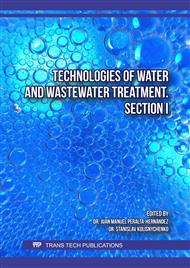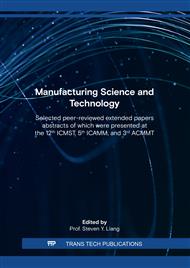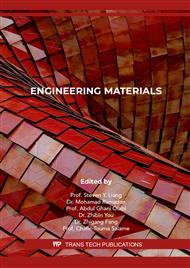p.169
p.177
p.183
p.193
p.215
p.223
p.231
p.237
p.249
Comparative Study on Purification Effect of Three Graphene Photocatalytic Nets on Polluted Water
Abstract:
Water pollution is still an urgent problem to be solved in China, and graphene photocatalytic materials have become a means of water pollution control because of its environmental protection and efficient degradation of pollutants in water. In this study, three kinds of graphene photocatalytic net were selected as experimental materials, and they were easy found on the market, selection of rural domestic wastewater as the experimental water. The experiment lasted for 11 days. The experimental results show that the black graphene photocatalytic net has the highest removal rate of COD, NH3-N and TP in wastewater, which can reach 77.4 %, 97.2 % and 91.2 %, respectively. At the end of the experiment, the water quality can rearch the secondary discharge standard of 'Discharge Standard of Pollutants for Municipal Wastewater Treatment Plant ' (GB18918-2002). The three materials have obvious improvement effect on DO in water, which are up to 54.9(black), 48.7(white) and 45.3 times (nano), respectively. This provides a new idea for sewage treatment.
Info:
Periodical:
Pages:
223-229
Citation:
Online since:
June 2022
Authors:
Price:
Сopyright:
© 2022 Trans Tech Publications Ltd. All Rights Reserved
Share:
Citation:




